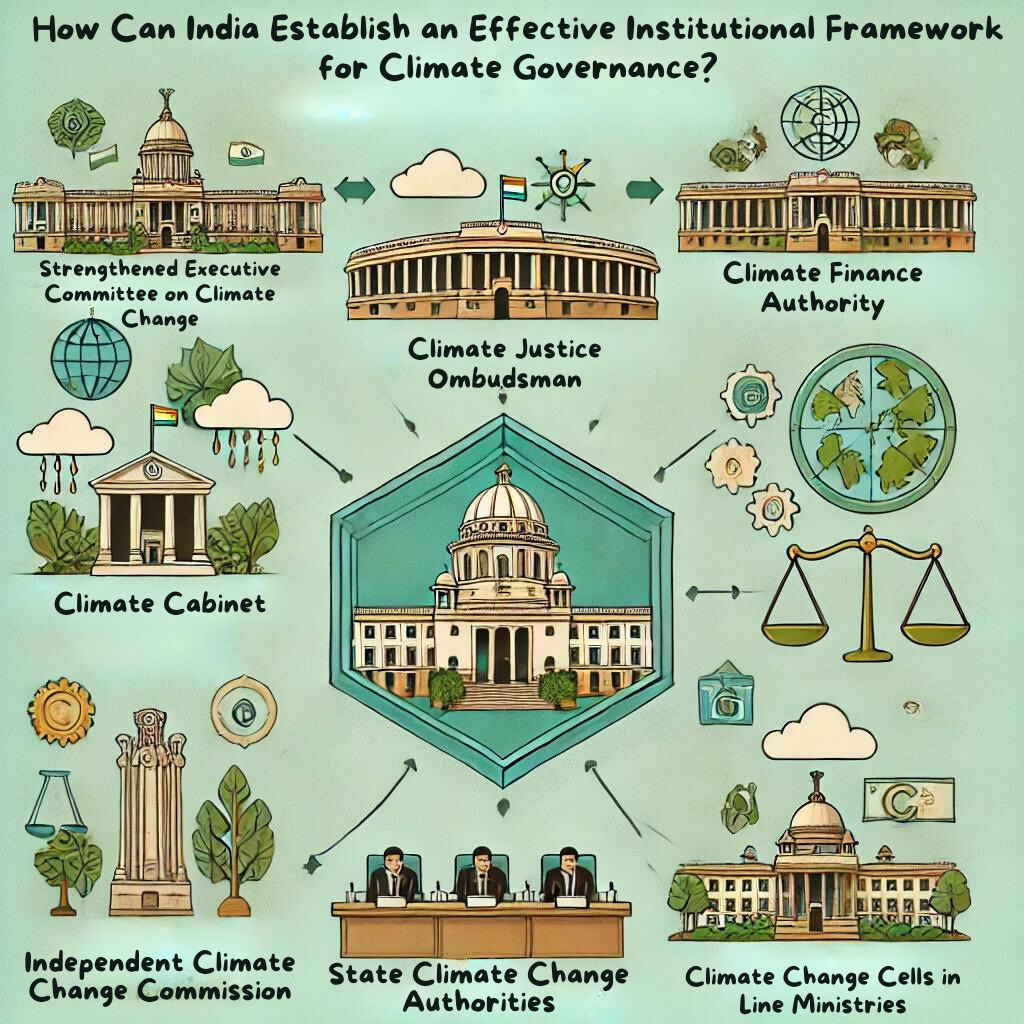In a recent groundbreaking judgment, the Supreme Court of India, in the case of M.K. Ranjitsinh v. Union of India, has boldly recognized a constitutional right to be “free from the adverse impacts of climate change.” This historic decision emerges from the fundamental rights to life and equality under Articles 21 and 14 of the Constitution of India, 1950. By doing so, the Apex Court has elevated climate protection to a constitutional realm and paved new pathways for environmental conservation and climate action in India.

Issues Involved
The core issue at the heart of the Supreme Court’s landmark judgment in M.K. Ranjitsinh v. Union of India revolves around the intersection of constitutional rights and environmental protection, specifically the right to be free from the adverse impacts of climate change. This ruling not only recognizes climate change as a pressing threat to fundamental rights to life and equality but also mandates a proactive stance from the government in addressing climate challenges.
The judgment’s reasoning delves into the necessity of integrating climate considerations into the fabric of national policies and legal frameworks, thereby elevating the fight against climate change to a constitutional obligation. It underscores the judiciary’s role in filling legislative voids, especially in areas of critical national importance like environmental protection, and sets a precedent for future legal and policy measures. This pivotal decision opens up new avenues for environmental litigation, making it a significant turning point that could shape India’s environmental jurisprudence and its approach to climate change mitigation and adaptation strategies.

How does the Court’s Decision Elevate Climate Protection to Constitutional Status?
Constitutional Grounding
The Supreme Court’s innovative approach intertwines climate protection with fundamental rights, thereby granting it constitutional sanctity. This pivotal move not only solidifies the legal foundation for climate action but also empowers citizens to demand more rigorous governmental efforts in combating climate change, leveraging fundamental rights as a potent legal instrument.
Judicial Activism
The judgment signifies a bold stride by the Indian judiciary into the realm of proactive environmental stewardship, filling the void left by legislative inertia. It exemplifies a broader, global judicial trend wherein courts are increasingly becoming instrumental in advancing environmental causes, underscoring the judiciary’s crucial role in environmental governance.
Expanded Scope of Article 21
By interpreting the right to life to encompass a stable climate, the Court has broadened the applicability of Article 21. This expansion not only underscores the inseparability of a healthy environment from the essence of life and liberty but also sets a precedent for future legal battles in environmental jurisprudence.
Equality Dimension
The Court’s decision brings to light the intersectionality of climate change and equality, recognizing the disproportionate impact of environmental degradation on vulnerable communities. By anchoring climate protection in Article 14, the judgment paves the way for more inclusive environmental policies, targeting climate justice at its core.
What are the Key Elements of an Indian Climate Law: Balancing Development and Climate Action?
Development-Oriented Approach
This approach underscores the necessity of aligning climate action with India’s developmental objectives, ensuring that efforts towards emissions reduction do not impede economic growth and poverty alleviation. It advocates for a nuanced strategy where development and environmental sustainability are not seen as mutually exclusive.
Climate Resilience Emphasis
The emphasis on resilience and adaptation along with mitigation efforts, addresses the multifaceted nature of climate change. It calls for comprehensive risk assessments, ensuring that India’s infrastructure and communities are prepared to withstand the impacts of climate change.
Just Transition Provisions
Acknowledging the social ramifications of a shift towards a greener economy, these provisions highlight the need for supportive measures for workers and communities dependent on carbon-intensive industries. It stresses the importance of reskilling, job creation, and economic diversification in ensuring a smooth transition.
Co-Benefits Focus
Advocating for actions that yield multiple benefits, this element promotes policies that not only address climate change but also improve air quality, public health, and employment opportunities, thereby maximizing the societal return on investments in climate action.
Technology and Innovation
The push for innovation and the development of clean technologies emphasizes the role of research and the private sector in driving environmental sustainability. It highlights the need for supportive policies and funding mechanisms to foster innovation in climate solutions.
Financial Mechanisms
The creation of robust financial structures is essential for mobilizing the necessary resources for climate action. This involves both the strengthening of national climate funds and the harnessing of private finance, underlining the multifaceted approach needed for effective climate finance.
Sectoral Targets and Strategies
Setting specific goals for critical sectors like energy, transport, and agriculture ensures targeted action that addresses the unique challenges and opportunities within each domain. It calls for a strategic approach tailored to India’s diverse economic landscape.
Subnational Action
This element recognizes the importance of localized strategies in combating climate change, advocating for a coordinated approach that encompasses national, state, and local levels. It emphasizes the role of state-level plans in adapting national goals to local contexts.
Monitoring, Reporting, and Verification (MRV)
A robust MRV system is crucial for tracking progress, ensuring accountability, and maintaining transparency in climate action. This framework facilitates the regular assessment of efforts, guiding policy adjustments and enhancing public trust in governmental actions.
Review and Revision Mechanism
Periodic reviews enable the dynamic adjustment of strategies in response to new scientific insights and technological advancements. Linking this process to international mechanisms like the Paris Agreement ensures that India’s climate actions remain aligned with global efforts and standards.
How Can India Establish an Effective Institutional Framework for Climate Governance?
Climate Cabinet
A strategic, high-level body, potentially led by the Prime Minister, would ensure a unified climate strategy across various sectors and levels of government, fostering coherence in policy formulation and implementation.
Strengthened Executive Committee on Climate Change
Enhancing the powers of this committee would bolster coordination among ministries, ensuring that climate policies are integrated across all sectors of governance, thereby streamlining efforts towards achieving national climate goals.
Climate Change Cells in Line Ministries
Embedding climate considerations into the core of sectoral policies through dedicated cells in each ministry would facilitate a holistic approach to climate governance, ensuring that all aspects of government action are aligned with climate objectives.
State Climate Change Authorities
Mandating state authorities to craft and execute localized climate action plans recognizes the diverse impacts of climate change across regions and leverages local knowledge and strategies in combating these effects.
Climate Finance Authority
A specialized body to oversee climate finance would streamline funding for climate initiatives, ensuring efficient allocation and utilization of resources towards both mitigation and adaptation measures.
Independent Climate Change Commission
An autonomous entity tasked with monitoring progress would enhance accountability and transparency, provide impartial assessments of India’s climate efforts, and inform policy adjustments.
Climate Justice Ombudsman
Establishing an office dedicated to addressing climate grievances ensures that the transition to a low-carbon economy is equitable, offering a recourse for those disproportionately affected by climate policies or impacts.

What Legal Mechanisms are Essential for Implementing and Enforcing India’s Climate Law?
Statutory Duties
Imposing clear statutory obligations on governmental bodies for climate action underlines the seriousness of India’s climate commitments, ensuring that all levels of government are legally bound to contribute towards national climate goals.
Climate Impact Assessments
Mandating comprehensive assessments for significant policies and projects ensures that their potential environmental impacts are thoroughly evaluated, guiding decision-making toward sustainability.
Public Interest Litigation
Recognizing the right to legal recourse for enforcing climate obligations empowers citizens and civil society, making it a potent tool for holding the government and corporations accountable for environmental stewardship.
Compliance Mechanisms
Establishing stringent monitoring and compliance frameworks, including penalties for non-compliance, is crucial for ensuring that climate policies are not just nominal but effectively implemented and adhered to.
Climate Budget Tagging
Requiring the explicit tagging of climate-related expenditures in government budgets enhances transparency, allowing for better tracking and evaluation of climate finance flows and their impact.
Inter-State Climate Council
Facilitating coordination between the central and state governments addresses the need for a unified approach to tackling climate change, ensuring that policies are harmonized and efforts are concerted across different levels of governance.
Corporate Climate Disclosure
Mandating disclosures related to climate risks by corporations aligns with global trends towards environmental, social, and governance (ESG) criteria, promoting transparency and informing investors about potential vulnerabilities.
Climate Change Tribunals
Specialized tribunals for resolving climate disputes offer a streamlined and expert judicial process for addressing environmental grievances, ensuring timely and effective resolution of conflicts.
Citizen Enforcement Mechanisms
Enabling citizen suits and safeguarding environmental defenders recognize the critical role of public engagement and activism in environmental governance, empowering individuals to act as watchdogs and advocates for sustainability.
International Cooperation Provisions
Incorporating mechanisms for international alignment and cooperation ensures that India’s climate actions are in sync with global efforts, facilitating participation in international carbon markets and climate finance mechanisms.
What is COSIS?
The Commission of Small Island States on Climate Change and International Law (COSIS) embodies the collective endeavor of vulnerable island nations to navigate the legal and policy challenges posed by climate change. Established in 2021, COSIS seeks to bolster legal frameworks, advocate at international forums, and enhance resilience among small island communities, highlighting the importance of solidarity and shared knowledge in confronting global environmental threats.
Conclusion
The Supreme Court’s recognition of a constitutional right to freedom from adverse climate impacts marks a transformative moment for India’s climate jurisprudence. This pivotal judgment lays the groundwork for a new era where environmental sustainability and human rights are intrinsically linked within the legal fabric of the nation. For judiciary aspirants, this development underscores the evolving nature of law in response to global challenges, heralding a future where legal professionals must be adept at navigating and shaping environmental law. As India stands on the cusp of this significant legal and environmental juncture, the role of judiciary aspirants and future legal practitioners becomes ever more critical. They are the harbingers of change, equipped with the knowledge and skills to drive the implementation of comprehensive climate legislation.
This moment serves not only as a call to action but also as a beacon of hope and a testament to the power of judicial activism in safeguarding the planet and its people. The journey from recognition to realization of this constitutional right will be arduous, and fraught with challenges and obstacles. Yet, it is a journey worth embarking upon, promising a greener, more equitable future. As we move forward, let this landmark judgment inspire and galvanize aspiring legal professionals to contribute their intellect, passion, and energy toward creating a sustainable and just world.

